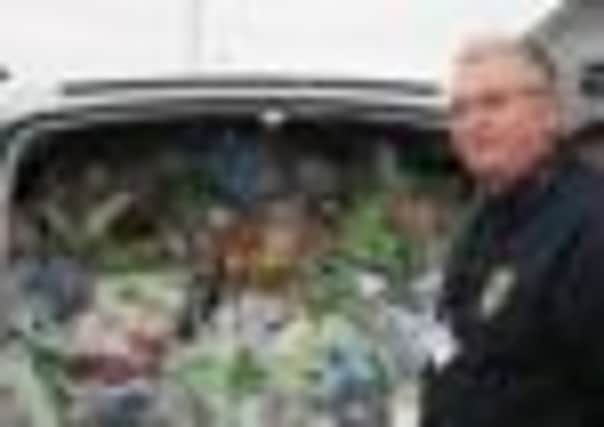Families on breadline turning to food banks


At present, there are four food banks within Edinburgh and the Lothians, feeding 144 families, with plans to develop a further three.
The Trussell Trust, which operates the valued facilities, have seen more than 50 people coming to their most recently opened food bank in Edinburgh North-West in just a few weeks.
Advertisement
Hide AdAdvertisement
Hide AdStaff at city food banks have also told of witnessing a rising number of more middle-class families through their doors as the recession begins to bite.
In East Lothian the food bank does not formally begin work until next year, although its trustees have decided to help those most in need in the run-up to Christmas. Within the first few days of accepting referrals, they have provided food parcels to 30 people.
The story is much the same in Whitburn, where the foodbank helps more than 40 people a week, while in Edinburgh South-East 24 people use the service.
Ewan Walker, operations manager of the Edinburgh NW food bank, said: “I’d like to say I’ve been surprised by the uptake but I’m not. Some families are really struggling to put food on the table.
“It’s not just unemployed people that we are seeing either but those in work with jobs are also struggling. The various agencies who refer people to us are only just beginning to know about us so I expect a lot more referrals in the coming weeks and months.”
Trussell Trust Scottish development officer Ewan Gurr also believes the number using food banks will shoot up in the next few months as rising food and energy prices force more working people to turn to the charity for help.
He said: “People with jobs have seen food prices increase by 30 per cent over the last six years. In that same period energy prices have risen too, putting a squeeze on many family budgets.
“More and more middle-class affluent people who you would not expect to see are being referred. In these cases many have lost their jobs and do not have any savings.”
Advertisement
Hide AdAdvertisement
Hide AdFigures from the latest Scottish Index of Multiple Deprivation released this week shows Edinburgh now has fewer of Scotland’s poorest communities.
But pockets of poverty still exist in the city in areas such as Niddrie – where a neighbourhood of 824 people living around Niddrie House Avenue emerged as the most deprived community in the city and the 40th most deprived in Scotland.
Other areas flagged up were parts of Moredun, Bingham, Muirhouse, Granton, Clovenstone and Dumbryden and Restalrig and Lochend.
Ewan Gurr added: “In places such as Muirhouse Drive and Granton Cresecent you have over 40 per cent of people living in deprivation – that equates that almost in one in two people, which is an incredible statistic
“People shouldn’t be embarassed about asking for assistance, staff at our foodbanks help without prejudice or judgement.”
‘IT’S LIKE THE GREAT DEPRESSION’
EAST Lothian Labour MP Fiona O’Donnell remembers the terrible feeling of not being able to provide for her children.
She said: “We were living in a lovely detached four-bedroom house and the mortgage rate just went up and up.
“I had four young children and I could not afford childcare to go out and work.
Advertisement
Hide AdAdvertisement
Hide Ad“I remember walking round the supermarket thinking ‘Have I got enough to feed us for the next week? What is there past its sell-by date that I can pick up cheap?’
“As a mother, that’s the most basic thing – to know you can provide food for your children. When you know you can’t, you just feel a complete failure.”
Ms O’Donnell has been closely involved with the food bank in East Lothian, but is appalled that such things are necessary in the 21st century.
“It’s like a return to the Great Depression of the 1930s – people queuing for food. Surely there is a responsibility for the state to meet the basic needs of shelter and food.
“It’s not just people on benefits who are having to turn to food banks. It’s people in work who suddenly have a relationship breakdown or are made redundant and help does not kick in immediately.”
HOW IT WORKS
CARE professionals such as doctors, health visitors, social workers, Citizens Advice Bureau staff, welfare officers, the police and probation officers amongst others identify people in crisis and issue them with a foodbank voucher.
Foodbank clients then bring their voucher to a centre to exchange it for a three-day supply of emergency food. Volunteers meet clients over a cup of tea or free hot meal and are able to point people to agencies able to solve the longer-term problem.